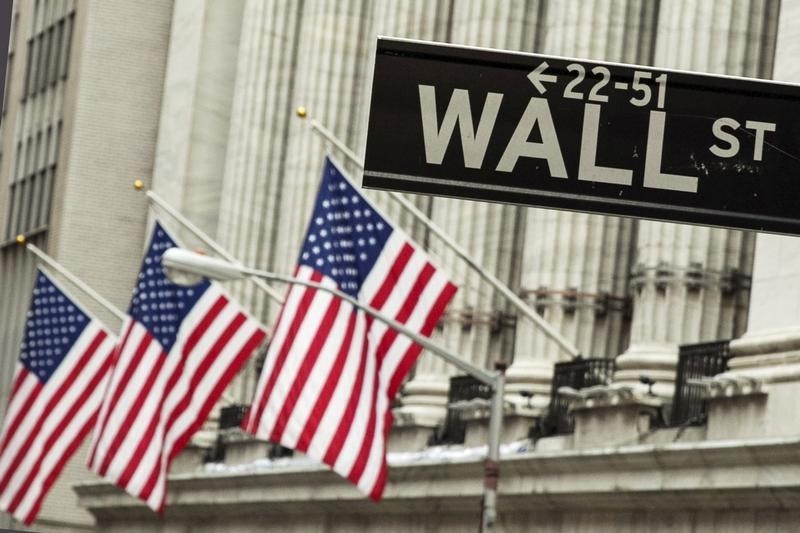Stock market today: S&P 500 hits fresh record close on stronger economic growth
Investing.com-- The S&P 500 jumped Friday, led by tech, as bets on a September rate cut were boosted after Trump nominated his top economic adviser, Stephen Miran, to fill a vacant seat on the Fed board at a time when focus on Fed chairman Jerome Powell’s potential successor is heating up.
At 2:57 p.m. ET (18:57 GMT), the Dow Jones Industrial Average rose 237 points, or 0.5%, the S&P 500 index gained 0.8%, and the NASDAQ Composite climbed 1%.
The main averages are on pace for weekly gains, with the tech-heavy NASDAQ Composite the star of the show, poised for a 2.9% gain before this session.
Fed rate cut, Chair successor in focus
The Trump administration’s tariffs took effect from Thursday, imposing import duties as high as 50% on regional economies.
Several countries have thrashed out trade deals with the U.S., including the European Union, reducing their tariff levels, but investors remained on edge over the economic impact of the duties.
A rise in weekly jobless claims on Thursday added to signs of a further cooling in the labor market, especially after last week’s disappointing jobs report.
These readings have furthered bets that the Federal Reserve will cut interest rates in September.
U.S. President Donald Trump has repeatedly called on the central bank to cut interest rates, and announced on Thursday that his top economic adviser, Stephen Miran, will be his pick to take an empty governor seat at the Fed, replacing Adriana Kugler abruptly stepped down from the role as a Fed governor last week.
If confirmed by Senate lawmakers, Miran would have the ability to vote on upcoming interest rate decisions. Notably, Miran has been a consistent supporter of Trump, and has particularly argued that sweeping U.S. tariffs will not massively drive up inflation domestically and the costs of the levies will instead fall mostly on overseas suppliers.
Trump has said Miran will serve in the role temporarily, but hinted that it could be extended.
"We will continue to search for a permanent replacement," Trump said in a social media post. Crucially, that person could be the one who eventually replaces Powell after his term at the head of the Fed ends next year.
Solid quarterly earnings
With more than two-thirds of the benchmark S&P 500 having reported their latest quarterly results, the number of those firms whose earnings have topped estimates is one of the highest in recent history, according to analysts at HSBC.
Roughly 80% of reports from constituents in the benchmark index have beat analysts’ profit estimates, with renewed optimism over the applications of artificial intelligence helping paper over concerns over an economic outlook clouded over by sweeping U.S. tariffs.
The S&P 500 is now on track for 10% per-share income growth in the second quarter, almost double initial Wall Street estimates, the HSBC analysts said in a note.
There are more earnings to digest Friday, with retailer Under Armour (NYSE:UAA) stock slumping after the athletic apparel maker forecast second-quarter revenue below expectations as it grapples with muted demand in North America due to still-high inflation and tariff uncertainty.
Pinterest (NYSE:PINS) stock plummeted as analysts flagged that the social media group’s second-quarter sales in the U.S. and Canada trailed its closest rivals.
Wendy’s (NASDAQ:WEN) stock fell after the fast food company cut its outlook for full-year global sales outlook, as the burger chain grapples with input cost pressures and a drop in traffic in the United States.
On the flip side, Expedia (NASDAQ:EXPE) stock soared after the online travel agent raised its full-year gross bookings forecast and struck an optimistic tone on the recovery in U.S. travel demand.
Peter Nurse, Ambar Warrick contributed to this article
